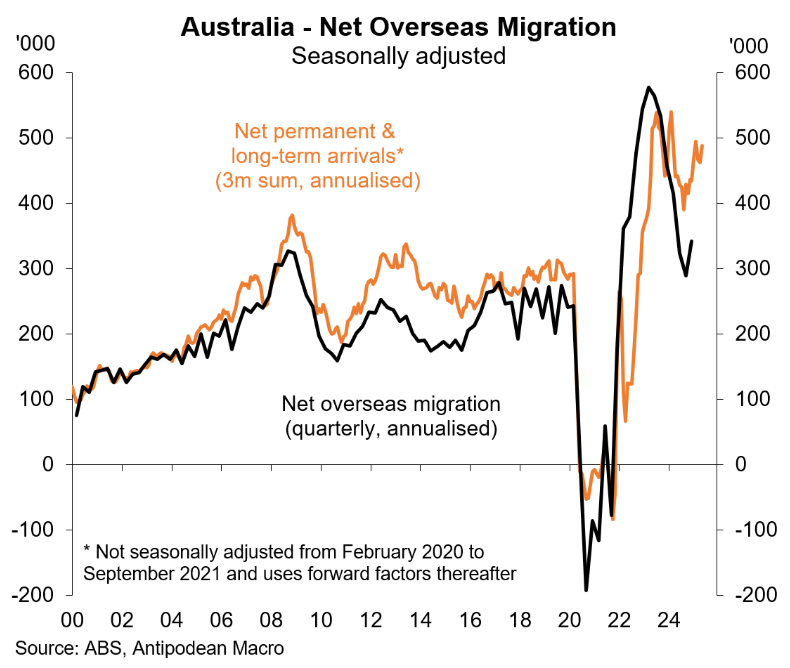The Q1 national accounts release from the Australian Bureau of Statistics (ABS) showed that real per capita GDP decreased by 0.2% over the quarter. This was the ninth fall in per capita GDP in eleven quarters.

The chart below compares the present decrease in real per capita GDP to previous episodes stretching back to the inception of modern national accounts in the early 1970s:
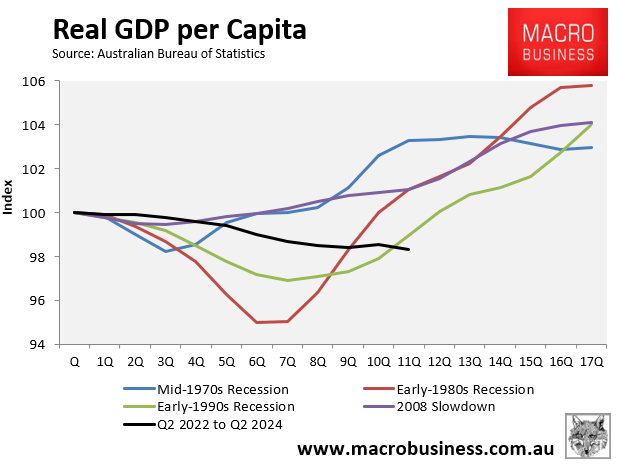
The current decline in per capita GDP has lasted eleven quarters, making it the longest in contemporary recorded history.
However, the current 1.7% decrease in real per capita GDP is not the most severe. The early-1980s (-5.0%) and early-1990s (-3.1%) dips were deeper, but they recovered faster.
In this regard, the early-1980s and early-1990s recessions were “V-shaped” or “U-shaped,” but the present recession is ongoing.
The Melbourne Institute’s GDP nowcast suggested that Australia’s aggregate GDP growth was 0.4% in Q2, as illustrated below by Justin Fabo from Antipodean Macro:

The June labour force survey estimated that Australia’s civilian population aged 15-plus grew by 0.4% in Q2:
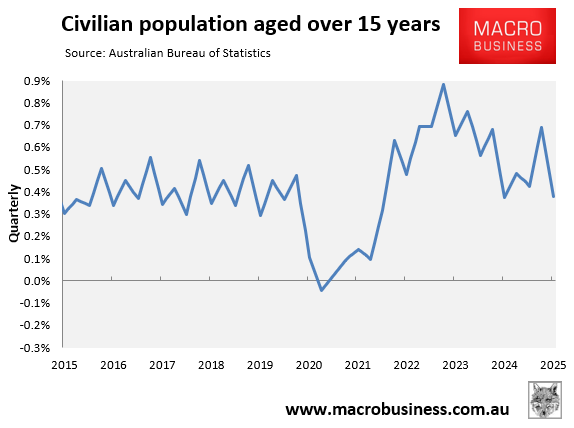
This suggests that Australia will record zero per capita GDP growth in Q2.
Meanwhile, the International Monetary Fund (IMF) has upgraded its economic growth forecast for Australia in 2025 to 1.8%, up from its April forecast of 1.6%.
The latest Statement of Monetary Policy (SoMP) from the Reserve Bank of Australia (RBA) forecasts that Australia’s annual population growth will slow from 1.7% in Q4 2024 to 1.5% by Q4 2025.
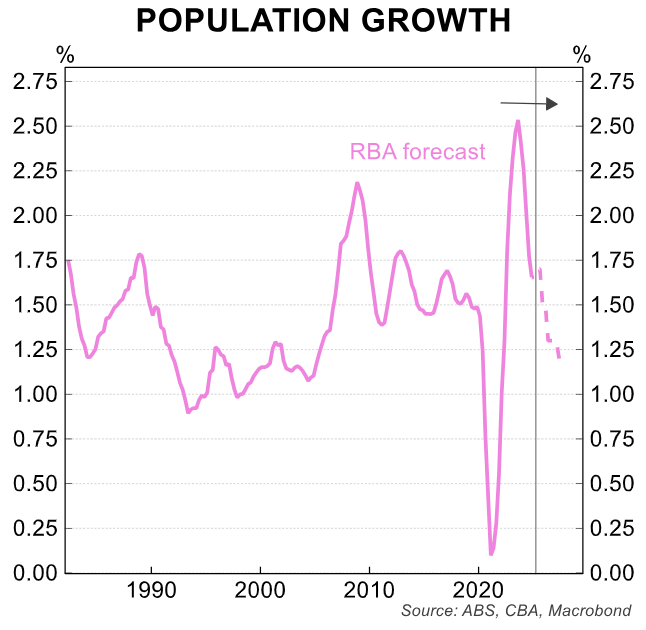
As a result, the IMF now forecasts modest (circa 0.3%) growth in per capita GDP in 2025.
The IMF’s growth outlook for Australia in 2026 has also been upgraded from 2.1% to 2.2%.
Given the RBA’s SoMP forecasts 1.3% population growth in calendar year 2026, this suggests per capita GDP growth of 0.9%.
The monthly data on permanent and long-term arrivals from the ABS recorded a record number of net arrivals during the first five months of 2025.
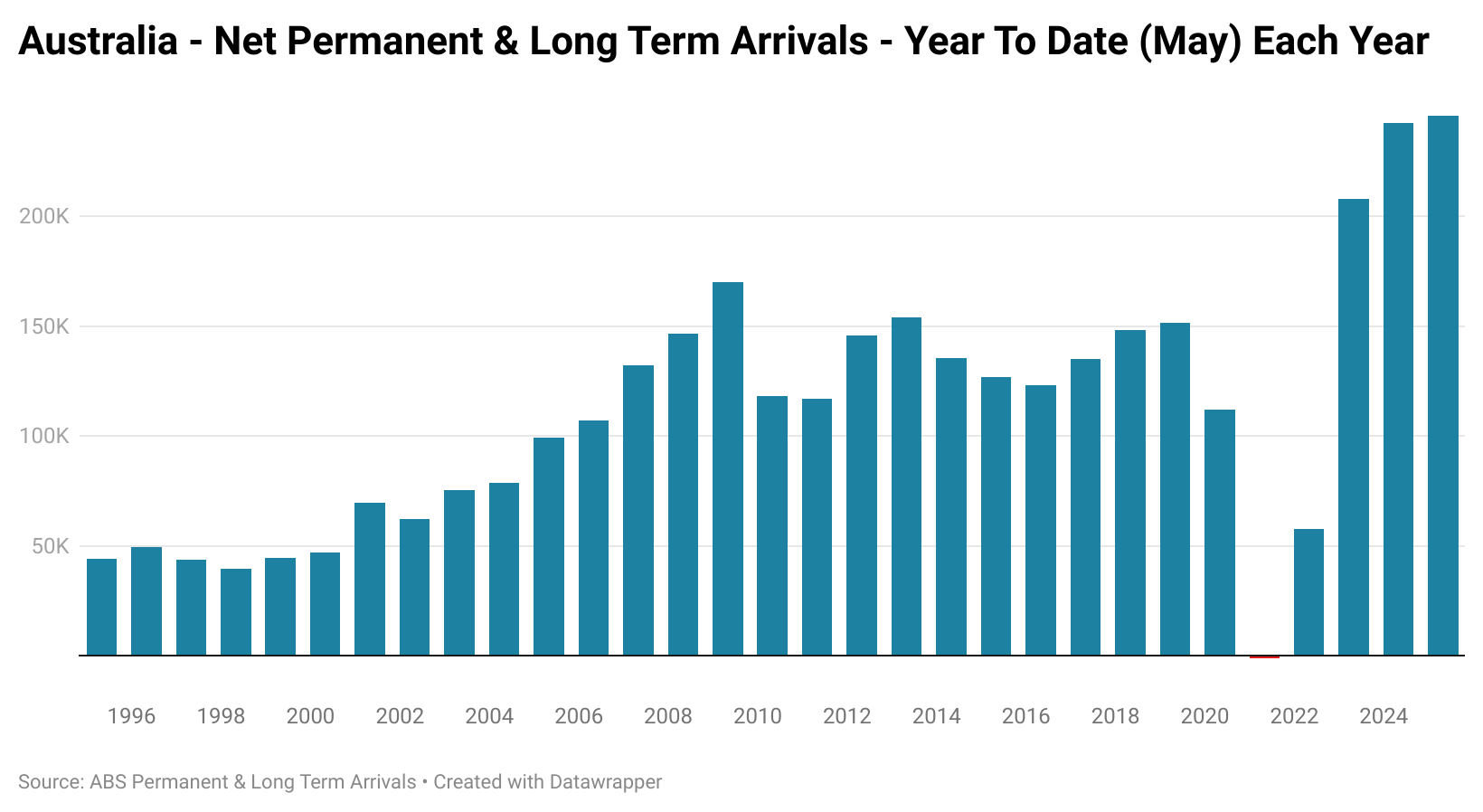
As a result, there is the clear and present danger that Australia’s population growth has reaccelerated, which could lower per capita GDP growth.
